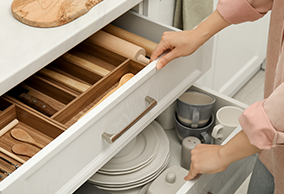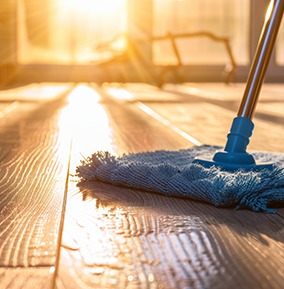Welcome to summer! Hopefully, there will be plenty of nice weather over the next couple of months so you can enjoy barbecues, picnics, deck parties, and other outdoor activities.
Without a question, it’s the perfect season for socializing. The long, sunny days and warm, moonlit nights are the perfect setting for sharing interests or discussing ideas with friends and family. You might even find yourself talking about the possibility of buying or selling a home.
If that topic comes up, remember that I’m always available to help with any questions you — or your friends or relatives — may have. Call or email me anytime.
Sending my best wishes to you and yours for a restful and fun-filled summer.

Still, it’s a good idea to review your policy with your insurance advisor and find out what’s covered and what isn’t. For example, if you have a flood in your laundry room, you don’t want to discover then that the damage is not covered.
Some events that often require additional coverage, or may not be covered at all are:
-Overland water (interior home damage from water outside the home)
-Sewer backup
-Poor maintenance (e.g., you could be denied if you didn’t maintain your foundation or repair a leaky pipe)
-Valuables beyond a specific amount
Without a question, it’s the perfect season for socializing. The long, sunny days and warm, moonlit nights are the perfect setting for sharing interests or discussing ideas with friends and family. You might even find yourself talking about the possibility of buying or selling a home.
If that topic comes up, remember that I’m always available to help with any questions you — or your friends or relatives — may have. Call or email me anytime.
Sending my best wishes to you and yours for a restful and fun-filled summer.
The Devil’s in the Details: Home Insurance Coverage

When you suffer damage to (or the loss of) your home or its contents, you expect your insurance company to come to the rescue, and most do.
Still, it’s a good idea to review your policy with your insurance advisor and find out what’s covered and what isn’t. For example, if you have a flood in your laundry room, you don’t want to discover then that the damage is not covered.
Some events that often require additional coverage, or may not be covered at all are:
-Overland water (interior home damage from water outside the home)
-Sewer backup
-Poor maintenance (e.g., you could be denied if you didn’t maintain your foundation or repair a leaky pipe)
-Valuables beyond a specific amount
Also, check liability limits. Ask your advisor to recommend an appropriate level. Finally, ensure you know exactly how much your home is insured for. Are you covered for the full replacement cost? Are you comfortable with that coverage, or would you rather only insure for the actual cash value?
Knowing you have the right insurance policy will give you peace of mind and is an important part of enjoying your home.
 When you put your property up for sale, you want to ensure that potential buyers get all the information they need on the features of your home and its surrounding area. For example, if a buyer doesn’t realize a great school is just around the corner, they might just walk away.
When you put your property up for sale, you want to ensure that potential buyers get all the information they need on the features of your home and its surrounding area. For example, if a buyer doesn’t realize a great school is just around the corner, they might just walk away.
Knowing you have the right insurance policy will give you peace of mind and is an important part of enjoying your home.
3 Lists for Selling Your Home With
 When you put your property up for sale, you want to ensure that potential buyers get all the information they need on the features of your home and its surrounding area. For example, if a buyer doesn’t realize a great school is just around the corner, they might just walk away.
When you put your property up for sale, you want to ensure that potential buyers get all the information they need on the features of your home and its surrounding area. For example, if a buyer doesn’t realize a great school is just around the corner, they might just walk away.An effective way to make sure something like that doesn’t happen is to create these three lists:
#1: The “bittersweet goodbyes” list
Chances are, there are things about your home or neighborhood that you’re really going to miss when you move. It may be the spacious living room, ideal for entertaining. Or maybe it’s the nearby park with scenic trails, perfect for walking and biking, or the large deck with just the right combination of shade and sun. Whatever you’ll miss, add it to the list. Those are features that will probably pique the interest of potential buyers too.
#2: The “just the facts” list
What are the facts about your property that a buyer needs to know to consider purchasing it? Such items may include total square footage, number of bedrooms and washrooms, property taxes, size of yard, etc. This list should also include special attributes, such as upgraded kitchen features and the local golf course.
#3: The “new and improved” list
Buyers are interested in the state of repair of your home, and in any improvements you have made to it. On this list, include all repairs completed during the past 3 years and, if possible, attach receipts. It’s especially important to include anything that’s been replaced, such as a furnace or roof shingles. If you’ve done any major remodeling or renovations, include those details too.
Want more tips on selling your home? Call today.

Choosing new or replacement eco-friendly flooring is one of the emerging trends among house and condo owners. Eco-friendly flooring is made from, or with, more sustainable resources, such as materials that don’t deplete or permanently damage the environment (such as toxic laminates), or reusable or recyclable materials. Here are some examples:
Renewable and Sustainable - Bamboo, cork, hardwood, natural stone, linoleum, and wool carpet are just a few of the options out there. Before you buy natural flooring products, ask if the harvesting methods are verified through an accredited authority.
Repurposed and Reclaimed - Flooring made from old building structures (e.g., posts, beams, walls, and planks) is a viable alternative to grown and harvested resources. Likewise, recycled glass, plastic, and rubber provide ample raw materials for creative flooring effects. Using them also reduces landfill waste. These products can be found through decorative flooring dealers.
When purchasing any flooring, be it natural or synthetic, it is important to know how the product is manufactured, and that it can easily be recycled when it is beyond its usefulness, as opposed to ending up in a landfill.
#1: The “bittersweet goodbyes” list
Chances are, there are things about your home or neighborhood that you’re really going to miss when you move. It may be the spacious living room, ideal for entertaining. Or maybe it’s the nearby park with scenic trails, perfect for walking and biking, or the large deck with just the right combination of shade and sun. Whatever you’ll miss, add it to the list. Those are features that will probably pique the interest of potential buyers too.
#2: The “just the facts” list
What are the facts about your property that a buyer needs to know to consider purchasing it? Such items may include total square footage, number of bedrooms and washrooms, property taxes, size of yard, etc. This list should also include special attributes, such as upgraded kitchen features and the local golf course.
#3: The “new and improved” list
Buyers are interested in the state of repair of your home, and in any improvements you have made to it. On this list, include all repairs completed during the past 3 years and, if possible, attach receipts. It’s especially important to include anything that’s been replaced, such as a furnace or roof shingles. If you’ve done any major remodeling or renovations, include those details too.
Want more tips on selling your home? Call today.
Eco-Friendly Floors

Choosing new or replacement eco-friendly flooring is one of the emerging trends among house and condo owners. Eco-friendly flooring is made from, or with, more sustainable resources, such as materials that don’t deplete or permanently damage the environment (such as toxic laminates), or reusable or recyclable materials. Here are some examples:
Renewable and Sustainable - Bamboo, cork, hardwood, natural stone, linoleum, and wool carpet are just a few of the options out there. Before you buy natural flooring products, ask if the harvesting methods are verified through an accredited authority.
Repurposed and Reclaimed - Flooring made from old building structures (e.g., posts, beams, walls, and planks) is a viable alternative to grown and harvested resources. Likewise, recycled glass, plastic, and rubber provide ample raw materials for creative flooring effects. Using them also reduces landfill waste. These products can be found through decorative flooring dealers.
When purchasing any flooring, be it natural or synthetic, it is important to know how the product is manufactured, and that it can easily be recycled when it is beyond its usefulness, as opposed to ending up in a landfill.